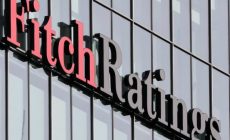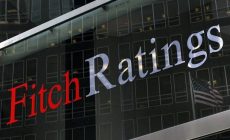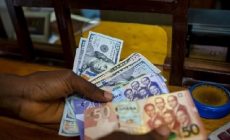Bank lending rates, which have remained high for decades, are expected to trend downwards as the prime rate of the country’s central bank continues to drop.
BMI Research, a Fitch Group Company, is predicting that Ghana’s prime rate – the rate at which commercial banks borrow from the Central Bank – will end 2018 at 18 percent.
The policy rate- a key benchmark indicator for the monetary economy – was cut by 150 basis points last week to 21.00 percent, signaling an improving economy.
BMI had earlier predicted an end-year policy rate of 20.50 percent for 2017, explaining that “while headline growth is rebounding as a result of an uptick in oil production, policymakers have expressed continued concerns over tepid credit growth and weak private consumption”.
It added that “falling inflation will allow Bank of Ghana room to continue to enact monetary easing, as the effects of drought fade and imported price growth is limited by a stable exchange rate”.
BMI therefore expects the regulator to continue lowering the benchmark interest rate through the rest of 2017 to 2018 to help stimulate the economy, forecasting that the policy rate will end 2017 at 20.50 percent and end 2018 at 18.00 percent.
Government has been touting its achievements in the last six months as it maintains that policies and programmes being implemented are yielding the expected results.
Inflation reduced to 12.1 percent at the end of June 2017, from 15.4 percent
at end December 2016 while interest rates are on the decline.
“The 91-day treasury bill rates have reduced from 16.4 percent at end 2016 to 12.08 percent at end June 2017,” Finance Minister, Ken Ofori Atta said.
According to the recent Monetary Policy Committee report, improved economic growth, reduction in inflation and relative stability in the foreign exchange market triggered a cut in the base lending rate by 1.5 percentage points.
The MPC said the economic activity continued to improve supported by a rebound in crude oil production and was expected to remain in line with trends seen in the first half of the year. The Bank’s CIEA also provides some positive indications of expected increased momentum in economic activity.
“In addition, implementation of fiscal policy measures towards providing stimulus through the key initiatives contained in the 2017 budget statement should provide added impetus to growth”.
Continuing it said “the disinflation process is still ongoing and this trend is likely to continue all through till the end of the third quarter. Barring any unanticipated shocks, the current stance of monetary policy and expected stability in the exchange rate should ensure price stability”.
Ghana is among the countries in Africa with very high interest rates. Though Treasury bill rates have dropped to about 14 percent, lending rates are still high at about 30 percent.
Interest rates in most advanced economies are very low with rate of between 1.9 and 3 percent in the USA. Rates in other industrial countries are even lower. For example, the yield on 10-year government bonds is about 0.2 percent in Ger¬many, 0.3 percent in Japan and 1.6 percent in Britain.
The situation enables the citizenry to borrow money easily and spend to stimulate the economy.











 (Selorm) |
(Selorm) |  (Nana Kwesi)
(Nana Kwesi)